UP TO THE MINUTE
CCS Coffee Conversations - Roofing Restoration in a Tight Economy - PODCAST TRANSCRIPT
May 26, 2025 at 5:00 p.m.Editor's note: The following is the transcript of a live interview sponsored by APOC. You can read the interview below, listen to the podcast or watch the recording.
Intro: Hello everyone. Welcome to Coffee Conversations Coatings edition this morning. Come on in and get cozy. We're going to get started in just about a minute. Welcome into Coffee Conversations everyone. Come on in and get cozy. Bring your coffee and your questions for these panelists and we're going to get started in about just a couple seconds. All right, let's get started. Hello everyone. My name is Megan Ellsworth here at Coatingscoffeeshop.com and I'm really excited because we have such an esteemed panel today for Coffee Conversations. But before we get into talking about them, I would like to just thank our sponsor APOC. Today we're talking about roof restoration during this tight, economical time and they brought this really great topic to us, so thank you APOC for being a great partner with Coatings Coffee Shop, so we really appreciate you. Okay, Johnny, let's start with you. Can you introduce yourself and tell us a little bit about you?
Johnny Walker: Yeah. Hey, good morning Megan, thank you for putting this together and having us on. But yeah, I'm Johnny Walker. I'm the National Technical Manager of Roofing and Waterproofing for ICP and APOC. I've been roofing roughly 40 years. Been with ICP APOC now 16 years, so moving right along. I'm hoping this will be my forever home and just do this until I retire, but it's been a great industry to work in and I absolutely love it.
Megan Ellsworth: Yeah, that's amazing. Well, we love working with you, Johnny, over there at APOC, so thanks for being here. Anthony Martin, who the heck are you?
Anthony Martin: Hello, good morning everybody. I am Anthony Martin. I am a territory manager for APOC Roofing and Waterproofing in the Southwest based out of Tucson, Arizona, the acrylic capital of the country. Been with APOC for a little over five years, specializing, along with Johnny, on the technical aspect of coating and roof restorations and fluid applied restoration systems. I have a strong dedication to high level of customer service and sales process for all customer points, whether it's our distribution partners, our contractors or our ultimate end users. I feel like it's very important, especially in this industry, to be honest, transparent and give contractors and our end user customers an honest opinion and a truly quality product that they can rely on for a long time.
Megan Ellsworth: Absolutely. Couldn't agree more. Thank you for sharing. Thomas, hello.
Thomas O’Toole: Good morning. Thank you for joining. I'm Tom O'Toole, RMS Orlando, Vice President. We are a commercial industrial roofing contractor here in Florida with branches in Orlando and Tampa.
Megan Ellsworth: Amazing. Thank you for being here. And last but certainly not least, Howard. Hello. Good morning.
Howard Piper: Good morning. I'm Howard Piper. I'm president of PBA Design Group. We're an architectural firm, a specialty architectural firm because we only deal with the exterior of buildings doing mostly restoration, whether that's roofing or painting or weatherproofing or below grade or replacing cladding or windows. I've been in the business since 1971 and it's been a good business for us.
Megan Ellsworth: Absolutely, yes. Well, thank you for being here everyone. Thank you Howard for sharing. Just so everyone knows, the chat is open. Share where you're zooming in from and say hey in the chat and if you have questions throughout this conversation, please put them in the chat and we will get to them as soon as we can. Okay. So on here, we just have some examples of some restoration work from our guests, so I'm just going to keep that up here. So gentlemen, let's start out by talking about the current environment and customer confidence in commercial roofing. Howard, do you want to take this away?
Howard Piper: Well, since we're talking about coatings, it is a great way to go. We encourage our clients not to wait till the roof is worn out to replace the roof, that's expensive, but consider at 10 to 15 years out, depending on the condition of the roof, begin putting coatings on there. Maintain the roof rather than replace it. Much like you might maintain your car, rather than just ignore it until it rolls over dead, you maintain it, change the oil, rotate the tires and do all those things. We don't get a lot of our clients that want to do that because of budget constraints, but it's something that we preach often is it's a lot cheaper to coat it than just keep replacing it.
Megan Ellsworth: Absolutely, absolutely.
Johnny Walker: Yeah, that's a valid point. The sustainability of the roof system is huge in this market. Roofing material's not getting any cheaper. Just continually, it's more and more expensive, so tearing it off, putting it in a landfill is not a great option anymore. Having a re-roof done, you're looking at a massive cost for a full tear off. So having the system that's sustainable, maintainable, that's very much environmentally friendly and in line with the current climate for that and the ability to actually get it done, the cost of it.
Megan Ellsworth: Yeah. Tom, what are you seeing with customer confidence with these commercial roofing projects?
Thomas O’Toole: To kind of piggyback off of John there, I mean the conventional roof system, the price increases that we've seen, availability issues, there's so many components, multiple components that go into each one of those roof systems. And maybe you have some available, maybe you have some that aren't, some are increasing in price, some are sticking and it gives us an opportunity to provide something with less volatility and offer a similar warranty to help out the building owners. So it's been working out really well using the coatings.
Megan Ellsworth: Yeah, that's awesome. So Anthony, I'm going to throw this next one to you. Why would you say now is a smart time to diversify a company's offerings with restoration and maintenance services?
Anthony Martin: Well, times are tight now, right? Locally, we hear a lot from our roofing contractor partners of slower schedules and where they used to be out six, seven weeks, they're out six or seven days if they're lucky. Expanding your portfolio is always going to be something strong and it gives you a time to learn something new. If you don't have a fluid applied restoration team or it's something that you're not familiar with, now's the time to learn because now those projects are going to become more and more available as building owners and architects are looking for more affordable ways and easier ways and simpler ways to extend lives of their roofs. It's going to be something that they can learn now and take into the future, keeping their crews busy and finding work. One of the great things about a fluid applied restoration system, something that we train on the APOC side, is roof maintenance. I love the point that Howard made about cars.
It's something that I often say, you don't wait to take your car into the shop when you hear your engine knocking, but for some reason, a lot of people wait to look at the roof until they have a leak. So practicing and training your crews on identifying these different solutions and getting into the fluid applied restoration and maintenance system is just going to be able to expand all of these contractors' portfolios for the future.
Megan Ellsworth: Absolutely. Anyone have anything to add on why now is a smart time to diversify?
Johnny Walker: Yeah, so... Go ahead, Howard.
Howard Piper: Well, I was just going to say that everybody that has a building has a roof and at some point that roof needs to be repaired. I think repairs are probably one of the more high profit areas of a company. A lot of competition in replacing or putting on new roofs, but repairing, everybody needs that and there's a huge demand for people to maintain the roofs and help them get the most life they can out of those roofs. I started in this business in 71 and the products that we have today are far superior to what we had back then and I think in the case of a modified, if you have a good modified roof, that roof, if you maintain it, coat it, give it a new wearing surface, instead of a twenty-year life or maybe a thirty-year, if you've got a really good system, you're probably talking to 40, 50 years service life out of it because you've protected the main structure of the membrane from the sun and the heat.
Megan Ellsworth: Yeah, absolutely.
Thomas O’Toole: Our side of the spectrum, the repairs that we do with these liquid products, like the APOC product, is very similar to the prep work. So it gives us an opportunity to show success using repairs and then also upsell the client on the same system. Yeah.
Megan Ellsworth: I love that. I love that.
Johnny Walker: Yeah, I would say diversifying right now is very important. We're in a volatile climate. We have tariffs going on, we never know what product shortages, that type of thing. We went through that where you couldn't get single ply, you couldn't get ISO board insulation board, resin supplies. So for a contractor, like Thomas was saying, "Hey, we're going to be able to do everything. We're going to be able to offer everything to our client, to our customer. Hey, well, if we can't do the tear off now or we can't do the single ply, what can we do?" Well, doing the restoration is a viable option and we saw that during the supply chain issues where they couldn't do a re-roof, they couldn't put a single ply on, so they went with the restoration and repair options and Thomas makes a valid point that every single product that we offer is part of the restoration system and so you're already going through your steps.
Once you get it watertight, then you can go on to making it reflective and protective and prolonging the life of that roof. So it really does become a viable option and it stunts for contractors to have all of their arrows in their quiver, not just one or two.
Megan Ellsworth: Yeah, yeah, that's so true. Okay, so we have a question from Nick in the chat, but before we get to that one, I want to ask Anthony, in what ways can restoration and maintenance support a business? We've kind of touched on this, but let's get into the nitty gritty. How can it support and prolong a business's life?
Anthony Martin: Well, like I said earlier, it's creating new revenue streams. It's creating new crews. It's having more objectives and more tasks for employees to do, right? If you have a restoration system that you're providing for customers in Tucson, a large majority of our restoration projects are actually residential. Over 85% of our homes out here are flat or low slope. One thing that we've seen and talking to Thomas a couple of days ago, something that his company specializes in is offering maintenance packages and service plans. It's something that we don't see a whole lot out here on the west, but we see as something that's a growing trend for some of these companies that are going to start doing fluid applied restorations and then offering three to five year service plans where they're sending a technician out every couple of months to come and do a roof walk, make sure the gutters and scuppers are clean, make sure there's no debris.
So again, it's expanding your portfolio, it's creating more jobs, it's creating more responsibilities for crews during down times, you can send guys out to do those quick maintenance things and really establish that long-term relationship for the end user. One of the best parts about acrylic restoration is that if you're maintaining your roof, these are constantly renewable. We can continue to re-coat your roofs as the current is going off over the time period of five to 10 years. If you have a service crew and you have a constant space in front of that customer, you're going to continue to build and can be able to continue to keep that customer using your services for 10, 15, 20 years. Then we know in the landscape of business nowadays, it's not just them, right? It's their neighbors, it's their children, it's their friends, it's their uncles. So if you can build a strong relationship with that customer by providing a fluid applied restoration, your name's going to grow just by word of mouth with those customers.
Megan Ellsworth: That's so true. That's so true. And I love what you said about keeping that customer 15, 20 years down the road just by having that maintenance relationship with them.
Anthony Martin: Yes. Yeah. If you have a trustworthy friend or someone that they know, "Hey, Tom came out and he saved me $20,000 by catching this repair. Had he not been out here for another five years, who knows how much damage would've been done?" But they're going to have more trust in their contractor and it's going to grow their business portfolio.
Megan Ellsworth: Amazing. Amazing. Okay, so we're going to get to Nick's question that was thrown in the chat. Some clients know, but many don't, that you can't just put a coating on a roof. Can you talk about what deficiencies on a roof that would prevent a roof from being a candidate for a coating? Who wants to tackle this one?
Johnny Walker: I'd be happy to, unless somebody else wants to, but.
Anthony Martin: John, this has your name written all over it.
Johnny Walker: So this is Johnny.
Megan Ellsworth: Take it away.
Johnny Walker: So yeah, when we look at roof restoration in general, A, first, you have to have a good candidate. So we're looking at, is the roof viable? So when we do roof inspection and when we do our trainings in-house for our certified aftercare training. We train them how to inspect the roof and what to look for. The biggest thing we're looking for are issues of ponding water. That's going to dictate what type of product we can put on it. Also, we're asking if there's active leaks in the system. If there are, then we know that there's potentially water in the system. If you've got a structural concrete deck, you actually might have a saturated roof deck, a roof system that you can't put a restoration or even a roof over the top of that. So properly maintain roofs, to Howard's point, if the roof is in good shape and it's been properly maintained, that's a restorable roof. So we're going to look for big problem areas. We've walked roofs where there's literally trees growing through the roof and structural concrete decks where it's saturated.
We've had ponding water areas where we found literally fish on the roof, all kinds of things like that. So proper maintenance is a big thing we look for. And you could tell these roofs, when you walk up on it, whether it's been properly maintained, the scuppers and drains are clean, the edge metal is in good shape, all the debris has been removed and we asked for the active leak and that's a huge key for us is do you currently have any active leaks? We want to make sure we identify what those are, where they are, how much water's gotten into the system and that's going to let us know. We evaluate the membrane itself to determine if it's coatable. Sometimes it's just beyond restoration. Although, hey, we want to sell coating restorations, the last thing we want to do is put good product over bad roof, right?
You're going to have a failure and then you're going to have an issue down the road and even if it doesn't go where it costs us money, you have that person who's now going to say bad things about fluid applied restoration. We want to make sure that the roof is viable and can be restored. And so I'd say those are the main key points.
Megan Ellsworth: What does it look like when a roof is too far gone, that system is too far gone, like you said?
Johnny Walker: Yeah. So, I mean, if they've got leaks everywhere, the system is deteriorated, splitting and cracking all throughout and that doesn't matter. It could be a modified bitumen system, could be a single ply system where the membrane is just completely shot. You're starting to get spider cracking that are cracked all the way through. That's where the leak issue comes in, looking for how many leaks do you have? How widespread is it? When you're actually thinking about the membrane as you're looking at that, you're going to look at your penetrations, so your scuppers, your drains, your curbs, your base flashings, penetrations through the roof and look at splitting and gapping and deterioration there. So the biggest thing is if water's in the system, it's causing leaks. And we also determine what type of roof deck there is. Structural concrete's the worst for that. Concrete being waterproof in itself can allow the system to really saturate in large areas.
We look at National Roofing Code, there's kind of a rule of thumb that if it's 20% wet, 25% wet, then you're looking at more of a tear off versus a restoration and that changes from state to state on what they will allow or don't allow. But cost effectiveness, if you're tearing off and how we would probably agree, if you're tearing 25% of the roof, you're probably looking at doing a full restoration or a full re-roof at that point versus replacing 25% and then doing a restoration over the top of it. So a lot of times when you're pulling off that much, everything has to come up to code. So all of your racking systems for your HVAC units, your insulation, all of that would have to come up to new code and meet new wind uplift standards if you're going to tear off that much as well.
So we're just really looking for that, how many active leaks? How bad is the membrane in shape? What kind of roof deck? We do moisture surveys or request moisture surveys on several different types of roofs out there. We also look at multiple layers of roof systems. National Roofing Code will allow two layers of roof to go on, so you can have a single ply over the top of an old mod bed or a built-up roof or the recovery board and that can allow for not just moisture below the original roof, but moisture between the two systems. So those become very problematic for a roof restoration system as well.
Megan Ellsworth: Okay. Thank you, Johnny. Okay, gentlemen, we have another question that goes right into that. Do you have to replace wet insulation before coating?
Johnny Walker: Yeah, so that answer is yes. If you put a fluid applied restoration on, you're going to further reduce the permeance of the roof system. And we think about what does moisture do in the roof? Well, it rots out steel decks, it rots out plywood decks, it causes mold growth and bacteria and that type of thing. And on a concrete deck, well, that moisture is going to spread and saturate. But the other thing moisture does is when it expands. So you think about a drop of water when it goes from liquid to gas expands 2000 times its size, so you can build pressure in a system that can cause blistering. And if you've put a fluid applied restoration over the top of the roof, you can actually now cause that coating system or the original mod bit membrane to start blistering because you've literally reduced the permeance further and trapped moisture. So National Roofing Code that you're looking at, they only allow 5% moisture in the membrane layer and 8% in the insulation layer.
Now, if you did a roof core and pull that out, it would feel dry to you. You're not going to look. It's not like it's going to be dripping off if it's that dry. So it really does take some due diligence to investigate your roofs, do proper moisture surveys, do proper coring, use moisture meters to check the moisture content in the roof system. And that's something that we also train on is make sure that, again, that's one of the big keys where, hey, this roof is not going to be restorable, so you're definitely going to have to replace that wind insulation, get it out of there and depending on how big that area is really going to determine is is this going to be a viable restoration or is this going to go over into a re-roof situation?
Megan Ellsworth: Got it, got it. Thank you. Okay and we have one more question from the audience before we get back. Do any of you know if there is a tax savings for the customer when they go the restoration route instead of replacement?
Thomas O’Toole: So with the recent rules that have been put in place, you can depreciate the upfront cost of even a restoration system now instead of waiting 29 years like you used to do. So as far as the tax savings, that's one of the big benefits of doing these is that we're able to tell our customers about them. Many of them are unaware that you're able to do that. So yes.
Anthony Martin: And lot of, especially out west here, we focus a lot and some of our bigger commercial buildings lead certifications and our acrylic coatings are lead certified as well. So for those organic facilities, food processing facilities out here in the west that rely on those different gold, platinum standard lead certifications, all of our acrylic coatings and our silicon coating are lead certified as well.
Johnny Walker: Yeah.
Megan Ellsworth: Okay.
Johnny Walker: Yeah, we meet Title 24, used to say Cool Roof Rating Council, but Energy Star and all those types of things. So when you're talking about tax rebates, we'd meet all the reflective requirements. And additionally, not just tax rebates, but you can sometimes get local rebates, state rebates depending on each state and what they require based on reflectivity, taking that dark roof that you get the urban heat island effect, all these dark roofs. And New York did that at one point where they say we're going to cool down the city temperature and one of the ways they did that was, "Hey, we're going to take all these black roofs, these dark colored roofs and make them reflective," And they had some nice rebates and that type of thing to go along. So along with tax, it sometimes can be local depending on where you live.
Megan Ellsworth: Love it. And that takes us directly into the next question, which is fabulous. How do cool roofs achieved through restoration and coatings reduce building owners costs and extend the roof life? Maybe Johnny can hit this one or Howard.
Johnny Walker: Yeah, yeah, I'm happy to. So reflective coatings, when we're looking at the reflective coating, generally they're 80 to 90% reflective, reflectance. That's going to take that roof surface temperature down to roughly around 10 degrees with an ambient temperature. So if you had a roof system that was getting up to 160 degrees surface temperature, now you're going to bring that down to within 10 degrees of ambient. So it's a 90 degree day, it's going to be around a hundred degrees temperature and that's not even enough to burn your skin if you walk down it bare foot. So that can potentially reduce the energy cost, the cooling cost in the building, but that's also based on... There's some calculators that are available. I know we've got them linked on our website where you can go in and put in all your data, what type of roof deck, type of insulation, how is the insulation, that type of thing and that can give you an idea of what type of energy savings you might have.
So we absolutely say that yes, it can provide, but absolutely will reduce the temperature. Now if you have a poorly insulated roof and we get this, I've got a project going on right now where it's a brand new metal roof, but it's uninsulated, it's just a great big warehouse. But that metal, even though it's a galvanized metal roof, is still getting hot enough to fry an egg. So we're going to coat the entire roof with a highly reflective, we're going to use, Anthony knows it very well, our 248 Arizona white coating, to reduce that. So we're going to take that 160 degree, 170 degrees surface temperature down to around a hundred degrees. So that's going to bring that heat load down in the building, make it more comfortable for the workers working in the warehouse and just overall. So the other type of savings that you see there is the longevity that it provides for the roof system because if you think of things when they get hot, they expand. Well, your roofs heating up to 160, 180 degrees are expanding a lot and then they have to cool down.
Well, with rains and all those types of things and we know that in Florida, you get the afternoon rains, the roof cools off, sun comes back out and heats back up. Well, by cooling that roof system off, it's going to expand less. Well, that's less tension on your scuppers, your drains, your curbs, your field penetrations and seams and all of that, so that's going to prolong the life. And again, talk about cost savings. It's going to bring the cost overall down for the maintenance and repair.
Megan Ellsworth: Yeah, amazing. Howard and Thomas, I'd love to know, since you all work with building owners every day, are you seeing this become more popular, people asking for cool roofs or reflective roofs to lower their heat or cooling costs?
Howard Piper: We are seeing some of that, not nearly enough. Yes, it's great to save energy, but a lot of these roofs are getting some age on them and roofs have traditionally been out of sight, out of mind. Don't worry about it, fix it if it leaks. So we look at the coatings more of, make your roof last longer. It's just a lot less expensive. But at the same time, using a white coating, you might get a rebate from the power companies. The states may offer some rebates if you do that. So there's advantages both ways, but in my mind, the big money saver is making that roof instead of lasting 20 years, go 30 or 40 and then you may be able to re-coat it again and get some extended life out of it.
Thomas O’Toole: Certainly. We're seeing it more so on the government side as it relates to the coatings and asking for them for certain applications. As far as the private sector, I wouldn't say it's less known, but it's more so something that we have to sell. A lot of these people, they're just interested in some conventional roof systems as opposed to the coatings and restorations, which also is a great thing when you bring that to them, the cost savings that you're saving them, you're giving them right off the front is a big benefit and it's something that they're very receptive to once you start to show them the differences.
Megan Ellsworth: Okay, so this might be an obvious answer, but how does restoration compare to tear-offs and complete roof replacement when it comes to cost, labor and disposal? What are the differences between the two?
Thomas O’Toole: From my perspective, it's about the liability on contractor's side. We're able to do something that's more topical and bond to the original or the surface of the roof, like with fluid applied roof coating systems. I don't have to worry about running thousands of fasteners and screws through the deck, through the assembly and potentially creating more issues. So from that perspective, that's the way we like to push it. A landfill costs, I mean, just every single piece of doing a roof tear off or even a recover, the costs are higher and the liability is higher. So that's the reason we like to push those coatings.
Anthony Martin: When you look at it from the building owner's perspective, if you have an office space where you've got 30 or 40 people, salespeople making calls, customer service departments, to tear-off a roof, that's extremely invasive. It's hard to be on the phone while someone's tearing off and you're hearing jack-hammers and you're hearing scrappers and pulling everything off. Outside of making sure that there's no cars parked around the perimeter of the building, if you're providing a fluid applied restoration system, there's very little impact and very little invasion of the interior or the operations of that building. So from that perspective, it's a huge time and cost saver for those building owners.
Thomas O’Toole: Less intrusive. Absolutely.
Johnny Walker: Yeah, definitely. Yeah, we generally see that the cost itself is about one-third the cost of a re-roof and I know that's an in general because every roof is different. The amount of penetrations and equipment on the roof are all going to affect that. But in general, we'll say that a full restoration that is warrantable just as long as a re-roof would be, in most cases, is less invasive, less liability for the contractor and one-third the cost. So it is definitely a viable option to be looking at regardless of where you're at and what system that they have on the roof.
Megan Ellsworth: Yeah. Okay. Oh, Howard, were you going to mention anything?
Howard Piper: I was just going to say we see coating projects, depending on the complexity and what you're doing, six, $8 a square foot for commercial roofing. And to replace that roof, you're probably looking at 30, $35 a square foot. So there's a substantial savings if you maintain that roof at the proper time and not try and make a bad roof into something good by just coating it. So it's a pretty big incentive there.
Megan Ellsworth: Yeah and that's a big incentive to have those maintenance programs built into your company so you are able to offer that to your customers at a lower price when it is time to re-coat and restore a roof system. So Thomas, we've talked about why it's so important to have all these maintenance programs and to add this to your business, but how do you and how contractors capture more maintenance work and restoration work?
Thomas O’Toole: The restoration is captured through the maintenance. If we're already up there doing maintenance with the fluid applied coatings, stripping in seams, three-forcing things and have success, it just gives us an opportunity to, again, upsell the customer on the full restoration, give them a warranted solution as opposed to repair solutions is something that you'll go on monthly, weekly, depending on what kind of issues they're having. But I can do the same, essentially, scope of work just to a larger scale and provide them with a warranted solution. So the trust is built through the maintenance program that we provide in order to... When you offer them a new solution that provides a warranty, they're very receptive and the maintenance is, I mean, that's number one. You have to do that first.
Megan Ellsworth: Yeah, yeah, absolutely. Okay. So Anthony, how can restoration help contractors enter new markets like multifamily, light commercial properties? Maybe there's some people on here that are strictly residential and want to start getting into some of this light commercial work.
Anthony Martin: Yeah, I think it just continues on the trend that we're on here. It's creating revenue streams, creating less invasive ways of maintaining buildings. When we talk about multifamily, like commercial, there are usually pretty strict budgets in terms of building [inaudible 00:32:09]. For contractors to be able to send out salespeople to sell those service prep packages that include routine maintenance, routine repairs and section by section restoration. I deal with a contractor down here that really specializes that in multifamily where they do building at a time. They might not do the entire apartment complex in the same pass, but they'll do two or three buildings different periods of time. Again, it's less invasive, you don't have nearly the concerns. As we talked earlier, some of these projects can be completed late at night or early in the morning before light commercial properties are present or open.
If you have a strip mall, a lot of those businesses aren't opening until nine or 10 o'clock in the morning, so you've got that nighttime or that early morning period of time where you can come out and get a lot of these repairs and maintenance projects done and completed that don't impact the day-to-day business or the day-to-day operations of the individuals that are living in the multi-family complexes.
Megan Ellsworth: Got it. Got it. And if anyone out there has any more questions, please feel free to throw them in the chat. We're still taking them, so don't be shy. Okay. So Thomas, I'd like to know from your perspective, what messaging resonates with building owners when you're proposing these restoration jobs over replacement? What are they liking to hear, basically?
Thomas O’Toole: Timeline for completion. Everybody wants things done quick, fast and they want us out of there. When we're doing the fluid applied versus complete tear off, again, like we just spoke about, it's less intrusive. I'm not tearing off little tiny sections of roof and disturbing the people underneath. Like he was saying earlier, you got somebody in there making phone calls and we're literally up there removing screws, taking out insulation, there's banging. It is intrusive. So that is number one. Number two, we can get the entire roof in the dry after the prep work is completed. You go up there, you clean it, we prime it and complete the prep work. That roof is leak free at that point. Then it just becomes, okay, now we have to grit everything out and code it. So that timeline to completion though would be our number one factor when we're trying to sell these and that's what they're most receptive to.
Megan Ellsworth: Okay. Anybody else have tips or tricks on how to pitch this to building owners?
Anthony Martin: Well, when we talk about acrylic coating specifically, like we said earlier, they're constantly renewable. While we provide material, labor warranties, material only warranties, a ton of different options when it comes into that landscape, a properly cared for and maintenanced acrylic coating can constantly be renewed. So it's not something, like if you've got a shingle roof or if you've got a tile roof or if you've got a single ply roof, those are going to expire at some period of time and then it's only a matter of time before you have to tear off. Luckily, with fluid applied coatings, we can save some single ply systems, but with an acrylic coating, you can continually maintain and restore that roof for the longevity as far as that deck is in good standing condition.
Megan Ellsworth: Yeah. Yeah.
Howard Piper: Ours is a little bit different that when we get involved with the client that is just asking what they need to do is we'll do an evaluation and give them good, better and best. We don't know exactly their funding situation and it may be extensive repairs, may just simply be a re-coating or maybe that roof is beyond reasonable repair and it's time to replace it, but we'll give them the options and try and give them some sort of forecast of what they would get for the investment. And many times we find it's just not worth the amount of money to put into repairs. There's just not the value that you would receive for that, so you need to look at something more extensive. But there are a lot of times when owners think the roof needs to be replaced and a good coating with some repairs will give them five or 10 years of life and that makes a difference.
Megan Ellsworth: Yeah, absolutely. I'm going to stop sharing really quick. We have some more questions from the audience. Yay. So maybe Howard, you can start with this one. How do you get building owners to take maintenance seriously when they're only thinking about replacement?
Howard Piper: Well, I think it's back to evaluating the roof and tell them what's wrong, what their options are. Many owners don't realize that you can coat a roof, that you can repair a roof. They're in the mindset that it's 18, 20 years old, it needs to be replaced. And that may be so, but we've seen lots of roof go longer than that and a good coating and repairs may be something they haven't considered. So give them the good, better and best, the best way to approach their project. And we even sometimes will throw in, "If it's my building, this was what I would do to spend my money the wisest way I can."
Megan Ellsworth: Yeah. Any other advice from you gentlemen on how to get the building owners to take maintenance seriously after the project and get that building on a maintenance plan?
Johnny Walker: Yeah, absolutely.
Thomas O’Toole: Go ahead, John.
Johnny Walker: Thanks, Thomas.
Thomas O’Toole: Yeah.
Johnny Walker: When you think of a restoration, a coating application, it's not just the coating. As Thomas said, it's got to be prepped, primed, patched, then you put the fluid applied coating on, which is your reflective protective layer. But when you think about maintenance, roofs move, roofs expand, even if we're going to slow the expansion, you have windblown debris, storm debris, that type of thing, you have other trades that go on roofs, HVAC guys. So absolutely, roofs must be walked, should be walked a minimum twice a year. If you just do a biannual every six months, roof inspection, clean your drains and your scuppers, those types of things, remove debris, look for windblown damage, look for contractor trade damage, all of that type of stuff. Small things can be repaired with small dollars, but if you wait until it's a major issue and now you've got water infiltration that's saturated the roof area, well now that area has to be cut up.
So now you're literally talking about removing, being very invasive, whereas a small maintenance program could have taken care of that. We encourage contractors... And it's actually when we warrant systems, for example, we offer or we give our building owners a building owner's maintenance guide that tells them everything they need to look for. In that maintenance guide, it says, "Hey, inspect your roof twice a year." If it's a warranted system, which we can offer anywhere from a five-year to a twenty-year labor and material warranted system on their roof, they have to go on the roof. So we educate that contractor to make sure that they're educating the building owner that this is part of the requirement to maintain their system. It must be inspected, must be maintained, all those things that I mentioned, just to keep their warranty good. Because again, small issues can be fixed with small dollars. A lot of our contractors and I think Thomas could probably elaborate on that, I think you guys do a maintenance program as well, don't you?
Thomas O’Toole: Yeah, we do. So like you just said, you almost took the words right out of my mouth, we encourage the building owners to read the warranty and all the paperwork that comes with it. And that right there gives us our foot in to sell a maintenance program for the roof to make sure that warranty stays in force. So I mean, that's the number one thing, read the warranty. A lot of people and we've seen it, I'm sure you guys have too, you put a roof on, you give them the warranty, goes in a file somewhere, nobody reads the thing. You have to encourage them. And even if you have to, you go over it with them, explain the situation, explain what they need to do to keep this warranty in effect. That's the only way they're going to get the full value out of the money they're putting down to restore this roof.
Megan Ellsworth: So true. That's great advice and I love that you sit down with them and read through it if you have to. That's great. Great advice. Okay, another question from the audience. What software would you recommend to estimate restoration jobs?
Thomas O’Toole: I do it the good old fashioned way, we get up there with a wheel. Some things you're able to do via satellite. There's tons of takeoff companies out there, satellite takeoff companies and you can use them. We've hit and miss on those. It's the old fashioned way. You get up there, inspect the roof, evaluate the roof, measure the roof.
Megan Ellsworth: Got it.
Anthony Martin: Yeah, I think Tom has hit it on the head. We see a lot of companies that use technology and technology is great, AI is great, drones are great, but a picture can only tell you so much. Unless you're on the roof walking on a roof, a picture or a drone's not going to tell you if there's any deck deflection. It's not going to be able to identify if there's any moisture on the roof unless you have one of those really, really high-end $20,000 drones that's got a thermal meter to it or something. So there's just some things, whether we like it or not, old school is the only school where you're going to have to get up on the roof and feel and touch and do a little bit of labor, as hard as it is nowadays, to get some of us millennials to do some labor, right? There's only one solution and it's get up there on a ladder and touch and feel and see for yourself.
Thomas O’Toole: Absolutely.
Johnny Walker: Yeah. If I can before on that, I would say that absolutely there are some tools out there. Some of them work really well, some of them don't. Getting on the roof yourself is probably the best way or having your contractor do your estimate. But we do offer some spreadsheets, like cell type spreadsheets where you can input the information. And I'm currently in beta testing for our own website where you're going to be able to put in there square footage, lineal footage of seams, that type of thing, base flashings and all of that and it'll give you a really good guide of how many buckets you need of this and how many buckets you need of that. So that should be going live here very soon on our own website.
Megan Ellsworth: Wow, that's exciting. Okay, so another one here. Keep them coming people. We're mainly in residential, how do we get started in commercial restoration without overextending?
Anthony Martin: Well, first and foremost, you want to register for one of the certified contractor certified applicator classes with APOC. We hold those classes in Phoenix, Arizona, Tampa, Florida and Dover, Massachusetts. So first and foremost, get registered for one of those classes. If not, reach out to one of your local distributors to contact an APOC rep. We can also do certification classes on the go. One of those pictures that Megan had up earlier on that slide was one of our demo trainings that we do on the road. So first and foremost, get in contact with one of your local APOC reps and find out how you can, A, get certified and just more importantly, I guess, learn more about what you're getting into and what the demands are for commercial restoration.
Howard Piper: I would expand that to say start out in repairs and coatings. There's a huge need for that. And then as you begin to build your crews and get your experience in and any certifications that are needed from manufacturers, then began to look at the commercial world. I imagine all over the country it's very competitive, but in Florida it's extremely competitive and there's not a huge pool of talent looking for work. If you're good in roofing, you've got a job. So build your crew. Start out in repairs. There's more than enough work to keep people busy in just repairing and coating roofs.
Megan Ellsworth: Yeah. Yeah. Great advice. Okay, so going off of that, getting trained in the APOC certified trainer or applicator training, how can contractors train their teams to recognize and sell restoration opportunities during inspections?
Thomas O’Toole: Yeah, like we were talking about earlier, with technology. Every single person, it seems, on this globe has a phone now. We use CRM software. So when we're up there doing maintenance service repairs, we're taking pictures of things. Now, what that does is it gives our office, our sales team an opportunity to review those after the repair is done and gives us an opportunity to upsell to the client or propose additional maintenance service, scope of work jobs, just to help the building owner, really and we identify additional problems. We may be just up there to look at a leak and stop a leak, but there's always additional issues that are up there that can be remedied to try to prevent further leaks in the future.
Johnny Walker: Every roof ages. Every roof.
Thomas O’Toole: That's right.
Johnny Walker: And I don't care whether you're in Florida or Washington state, every roof ages. You have different climate, different temperature extremes, some dry climates like Anthony over in Tucson, some extremely wet climates like here in Florida. So we all have our own environmental concerns when it goes to that, but they all age. So training them that, hey, as Tom said, you're going up there for a simple repair. Look at the overall situation on the roof, look at the age of it, look at the overall condition. Is this at the point where it's done and, hey, all we're doing is band-aiding this roof or is it still in decent shape, minimal leak issues and can we offer them to prolong the life of that? Because if you don't, what are they looking at? Even if you make a repair on a bad seam, well, the rest of the roof is still aging and it's aging at a rapid rate. The UV's breaking it down, the wind, the rain, all of that is attacking it every single day.
You put a fluid applied restoration on there and do it right, not just a coating, but properly prepped, primed, patched and protected. Now you have a true system that will prolong the life of that roof. It's going to block the UV, it's going to reduce the temperature load on the building, it's going to reduce the expansion of the overall system, everything's being protected universally so everything is now expanding and contracting at the same rate versus patchwork, where you might have different color patches on a roof that are all acting against each other. So when you're talking about the sales guys, how do they sell that? Understanding to use technology, take the pictures, look at the overall condition and say, "Hey, is this a good candidate?" And make that offer. And Howard made a great point, offer them a good, better, best.
"Hey, what's the good?" "We're going to fix your [inaudible 00:47:47] right now. We're going to make this repair today. I'm going to stop this leak." "What's the better?" "Well, hey, we're going to offer you a restoration system that will get you 5, 10, 15 or 20 years down the road." And, "Hey, what's the next option?" Well, if it can't be restored, then you're going to offer them a re-roof. So always have those different options in your pocket that you can do on the system. And obviously we're talking about reflective coatings, but Antony does a great deal of tan and cool gray type coatings.
Megan Ellsworth: Oh, nice.
Johnny Walker: And in the northern markets, we do even some black silicone, so it doesn't have to be white. Yes, white's going to give you the reflective, but maybe you're in Minnesota and you don't necessarily need that, but you want to prolong the life of that system and prevent the UV from breaking it down where you can choose other options within the restoration arena that's going to give you more ways to sell with your company.
Megan Ellsworth: Yeah, that's huge. I love it. Okay. Johnny or Anthony, can you give us a little more info on the certified applicator training program that you all offer through APOC?
Anthony Martin: Well, it's Johnny's baby, so I'll let him run with it first.
Johnny Walker: I'm trying not to take all the time here, but yes, Anthony already really said it, but we offer certified applicator training in Phoenix, Tampa and Andover. We also do on the road trainings, we have a truck and trailer in multiple locations where we'll come around and do on site trainings. We do tailgate trainings every day, all day. Every one of our sales reps out there is showing off product. But if you want to come in and be certified, go to apoc.com and click on register for the training class. Now, we offer more than just a certified applicator. One of the things I kind of talk about, one of the earlier questions was we actually offer a class and it's just a few hours, it's like a four hour where we sit down and we talk about the benefits of fluid applied restoration. So literally it's diversifying your business with fluid applied restoration.
Megan Ellsworth: Amazing.
Johnny Walker: And it's for that owner, it's for that contractor that's like, "Hey, I'm in residential," Or, "I do single ply." "I've never thought about doing fluid applied restoration. Why would I want do it? What's the benefit to my company? What's the potential exposures and benefits?" All those types of things. And we go through all of the ways, what roof is restorable versus what's not? What is a restoration versus just putting a reflective coating on. But then we have our certified applicator training which is designed for the actual guys installing the product, the guys that are going to be hands-on. So this is the superintendents, they're going to be running the jobs, the actual hands-on guys. We do not charge for our program. We have these classes, they're every month, you go on, you're registered, you come in, it's generally a two-day class unless it's for some reason a very small class, but it's a day of going over all of the policies and procedures and paperwork and inspecting roofs and what to look for and all of that and then a full day of hands-on where we're actually doing pipe penetrations and scuppers and drains and field seams and putting down primers and coatings and working with different mastics, whether it be acrylics or silicons and talking about which is the right.
Is this an acrylic roof or is this a silicone roof? Which roofs are best for which? So they learn all of that in a certified applicator class. But in the diversifying your business class, they get a really good understanding of, hey, why would I want to do it? What's the benefit to my company? And what type of knowledge do I need to have and do my teams need to have? So when we talk about the shingle guys, that's one of the great things. If you can come in and we can train them, they can do restorations. It's not difficult. It's understanding what to look for. And we have some contractors that partner with commercial roofers that they'll say, "Hey, I'm residential, you're commercial." They'll do the actual fluid applied restoration repair, but if they need to cut out a section, they'll call a Thomas O'Toole and have him come out and cut that section out and replace that and then they take it from there. So they do work together on these projects, so lots of ways that they diversify.
But the trainings are great. We continually do these every single month. We have great response. And the other benefit too is when they go through our training, we move them up in our loyalty programs. So it's an additional benefit for the contractor when they attend our trainings.
Megan Ellsworth: Oh, that's awesome. That's such a great incentive.
Howard Piper: We like those certification programs. NRCA has something very similar to that, which is not a product specific or modified or single plys where the individual roofer can get certified after taking a test and passing that test. From our perspective as designers, we don't know who the roofer is going to be, so we like the certification programs to know who the actual mechanic is that's going to be installing that roof and knowing that they are qualified to do it.
Megan Ellsworth: That's good to know.
Anthony Martin: Exclamation mark on that. We have been tasked with, at APOC, not only to build the strongest relationships in the industry, but we also want to be the training experts. All of our reps that are strategically placed across North America have been trained by Johnny Walker, who, if you've had the privilege of being around Johnny, he's one of the best trainers in any industry. I'll give him that.
Thomas O’Toole: No doubt.
Anthony Martin: You can learn a lot from just listening and watching him. But that's really something that we at APOC take pride on is training. So whether it is a certification class, whether it is a demo day at a distribution yard, whether we are pulling the trailer out to a specific contractor's yard, we are tasked and take a lot of pride in developing and cultivating that training environment, training culture and always learning something. Whether it's us learning something from the contractor or it's an older contractor or a newer contractor learning something from us, we're always in the constant training mindset.
Johnny Walker: Never stops.
Megan Ellsworth: I love it. Thomas, are there any certifications that you or your team have done that you would recommend?
Thomas O’Toole: Other than individual coating certifications, I don't know off the top of my head. We just get certified with the... I mean, every manufacturer that we feel has a performative coating solution, like the APOCs of the world. So yeah, we're certified.
Megan Ellsworth: Nice. And Howard, thank you for mentioning the NRCA certification, ProCert certification program. It's really great. Everyone go check that out as well. They have some really amazing programs. To round this out, we just have a few minutes left. This is flown by. Where can contractors find resources and support for this journey that they're on, diversifying their offerings?
Thomas O’Toole: Me personally, I like to lean on APOC and the manufacturers. Johnny is no stranger to a roof. I think he still loves getting on roofs and I love to be on them with him. And I feel like once you bring the manufacturer out in the beginning, in the onset, it gives you guys an opportunity, as well as us together, to identify any issues. It gets our foot in the door with them. They're happy because this job's going to go APOC. They're on the roof first. We would like to bid it that way and that's why we bring them in. But we always would like to rely on somebody like Johnny to get up on the roof at the beginning and identify these specific issues so that we can bid the job properly and have a successful job for the client.
Megan Ellsworth: Love it. Yeah.
Howard Piper: If you're in Florida, next week is the Florida Roofing Sheet Metal Contractor's Association.
Thomas O’Toole: That is right.
Howard Piper: Go to the convention. And if you're not in Florida, you have an excuse to come to Florida.
Thomas O’Toole: There you go.
Megan Ellsworth: It is a great show.
Thomas O’Toole: You'll see us. We'll be there.
Megan Ellsworth: Yes. Yay. Okay.
Howard Piper: The best in the country.
Megan Ellsworth: Yay. RMS will be there. APOC will be there. Howard will be there for a little bit. So definitely go to FRSA. Roofer's Coffee Shop and Coating's Coffee Shop will be there. Come say hey.
Thomas O’Toole: Nice.
Megan Ellsworth: Amazing. Yes. And so people can go to the APOC directory on coatingscoffeeshop.com to learn more about their certification program and in everything else that APOC does to support the contractors they work with. And then also definitely check out NRCA and RCMA, some of these associations that are doing a lot of great things to provide information and certification for the contractors in this great industry. So anybody have anything else to add on where contractors can find resources?
Anthony Martin: Well, I'll jump on there too, Megan. Not only do we have the major shows, the Western states, FRSCAs, but get involved locally with your state and roofing contractor associations. APOC is one of the longest platinum sponsors for Arizona Roofing Contractors Association. The membership of that includes classes. So whether it's tile installation, [inaudible 00:57:14] installation, coatings, single ply, these classes, once you're a member specifically for ARCA or ARCAT, Texas, California, everybody has a state or a local Roofing Contractors Association, these groups all provide free educational trainings. So if there's something that a contractor needs more just overall general education on, get in contact with these local groups. That's what we're here for. That's what this industry relies on is constant training. And a lot of this education is readily available for you simply by clicking and registering on different links.
Megan Ellsworth: Yes, agreed. Agreed. Johnny, were you going to add something?
Johnny Walker: They stole it from me. So that was exactly what I would say.
Anthony Martin: I got you. I got you, Johnny.
Johnny Walker: IIBEC is a great resource. Used to be RCI, Roof Consultants Institute. That's a great tool. If you're a local contractor, your local IIBEC will be doing trick classes all the time. Anybody can attend them. And sometimes there's a fee for it. They do certifications, they do continuing education. So if you're really looking, depends on where you're at and what you want to learn and a lot of times the manufacturers will go and help sponsor those events. So yeah.
Howard Piper: I was going to plug IIBEC as well. There's actually two more educational classes coming up in the state in August and November. So go to IIBEC and that's in Florida and come to Florida and visit if you don't live here.
Megan Ellsworth: Yeah, absolutely. Well, gentlemen, this has been an amazing conversation. Thank you so much for chatting with me and sharing all your wisdom and all this great advice. I'm going to share screen again and just thank APOC for bringing this to us and being a great, great partner with Coatings Coffee Shop. So thank you, APOC. Thank you Johnny and Anthony for joining us. This has been absolutely amazing. And everyone can go to CoatingsCoffeeshop.com to the read, listen, watch section on our menu to watch this live in 24 to 48 hours or I guess on demand, not live. It'll be up on the site within that timeframe and you can share it out and send it to your friends and family and watch it over and over again and keep taking notes, so thank you all so much for attending. And gentlemen, thank you so much for being here.
Thomas O’Toole: Thank you for having me.
Johnny Walker: Thank you, Megan.
Megan Ellsworth: Absolutely. Thank you everyone and we'll see you on the next Coatings Coffee Conversations. All right, have a great Thursday.
Johnny Walker: Bye everybody.
Howard Piper: Bye. Thank you.
Outro: Bye. Thank you so much.

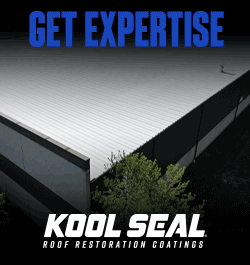


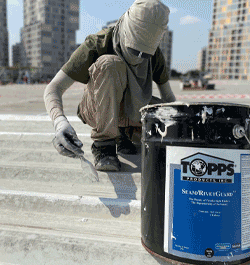



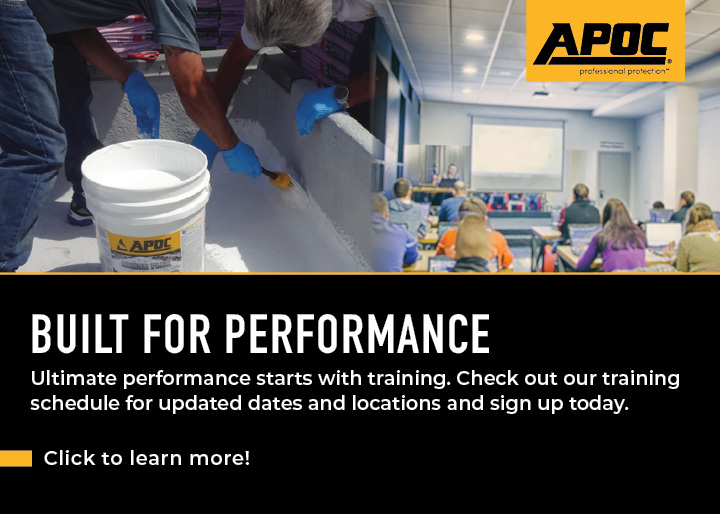




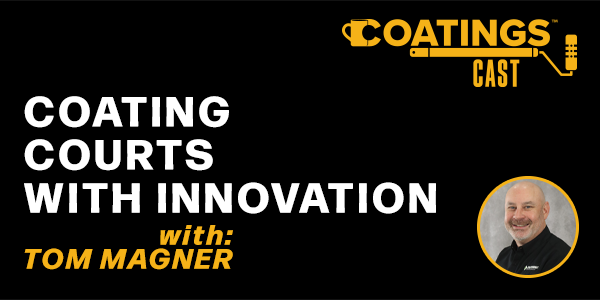
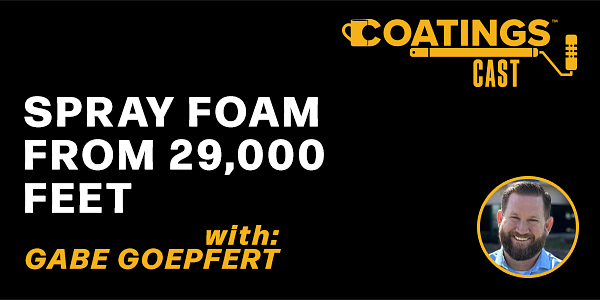





Comments
Leave a Reply
Have an account? Login to leave a comment!
Sign In